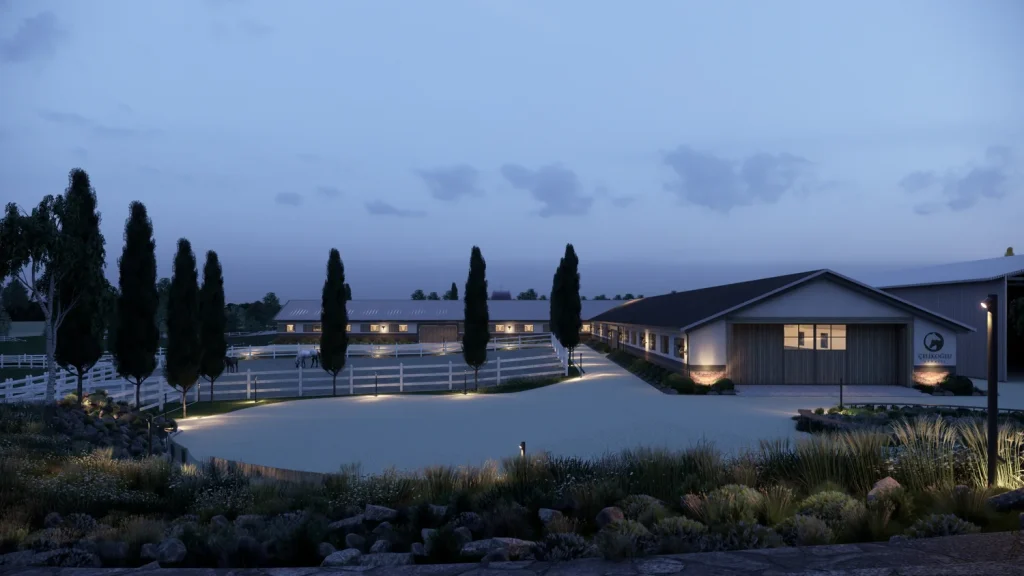Horse farms must be meticulously planned to meet the needs of both horses and their owners. A well-designed horse farm supports the health and well-being of the horses while providing a comfortable and efficient working environment for the owners. At Equine Design Studio, we would like to share important points to consider in horse farm design.
1. Site Selection and Planning
The first step in horse farm design is choosing an appropriate site. The area should be spacious, flat, and have good drainage properties. Additionally, environmental factors such as wind direction, sunlight, and proximity to water sources should be considered. The overall plan of the farm should ensure the optimal placement of stables, paddocks, training areas, and other facilities.
2. Stable Design
Stables should be carefully designed to meet the shelter needs of the horses. Stable stalls should be sufficiently spacious and arranged so that horses can move comfortably. Ventilation and lighting systems ensure that the stables are airy and healthy. Stable floors should be made of non-slip and easy-to-clean materials. Additionally, suitable equipment to meet the horses’ feeding and water needs should not be overlooked.
3. Paddocks and Pastures
Paddocks and pastures are areas where horses can roam and graze freely. These areas should be surrounded by sturdy fences to ensure the safety of the horses. Paddocks can be divided into sections to keep different groups of horses separate. Regular maintenance and grazing rotation of pastures help keep the soil and vegetation healthy.
4. Training and Exercise Areas
Horse farms should have areas suitable for training and exercising in different disciplines. Indoor arenas, outdoor training grounds, obstacle courses, and long riding trails support the physical and mental development of the horses. The surfaces of these areas should be made of flexible and durable materials to protect the horses’ joint health.
5. Health and Care Facilities
Special areas should be designed for the health and care of horses. Veterinary rooms, farrier areas, washing and grooming sections are necessary for regular health checks and care of the horses. These facilities should be planned to reduce the stress of the horses and facilitate care procedures.
6. Storage and Administrative Areas
Horse farms should have sufficient storage areas for feed, hay, equipment, and other materials. Keeping the storage areas dry and clean maintains the quality of the feed and materials. Additionally, offices, staff rooms, and restrooms for administrative tasks should also be included.
7. Safety and Emergency Measures
Safety is one of the top priorities in horse farms. Fire extinguishing systems, first aid equipment, and emergency plans should always be ready. Additionally, sturdy doors and locking systems should be used to prevent horses from escaping.
8. Natural and Aesthetic Elements
Horse farms should be aesthetically pleasing and harmonious with nature. Trees, flowers, and landscaping create a more inviting and peaceful farm environment. Natural elements support the mental health of both horses and owners.

